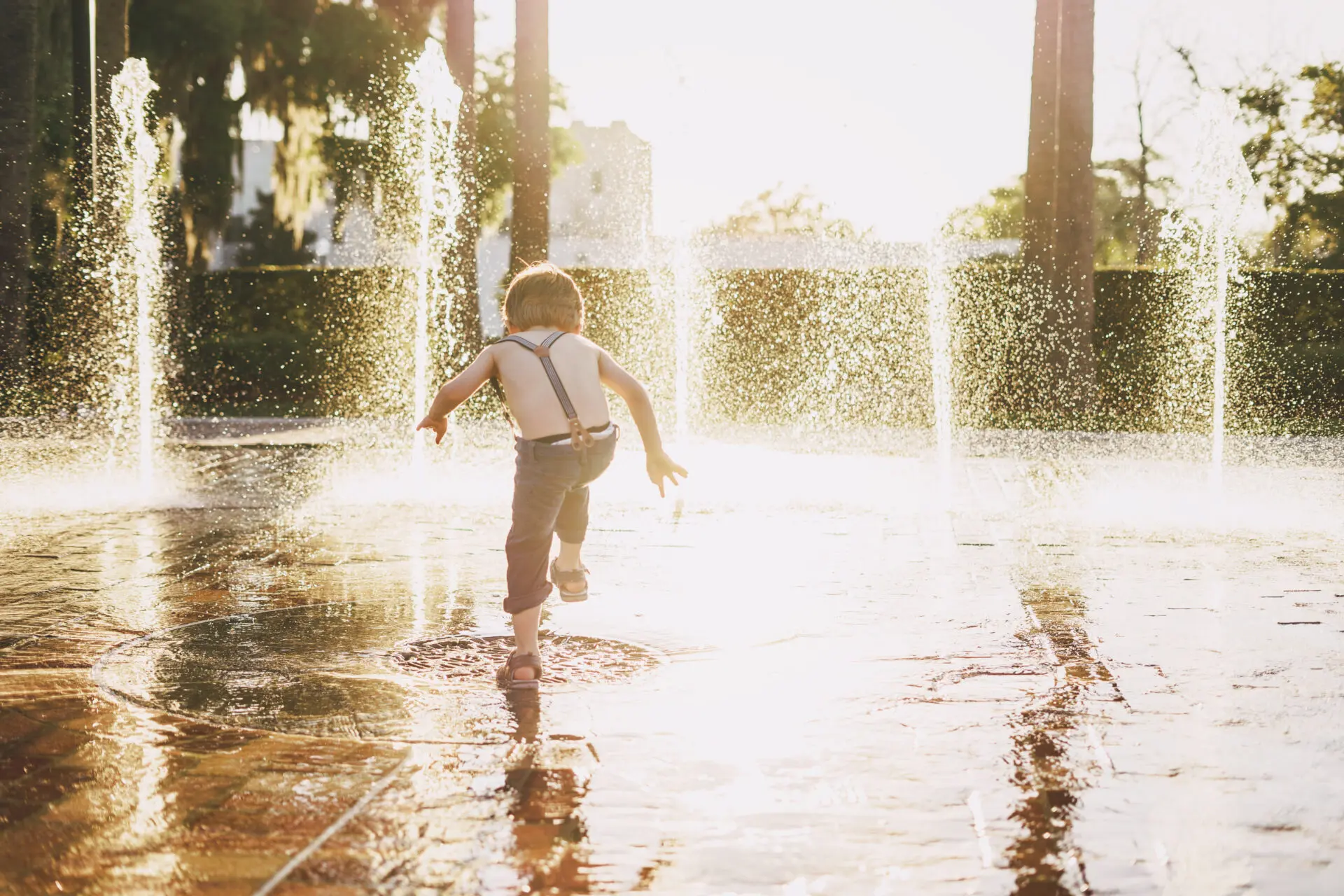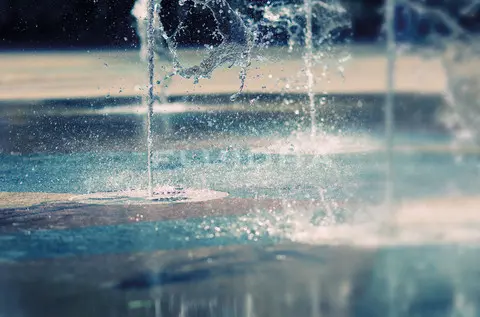Dry deck fountains are a common decorative element in any modern city. They are installations that provide experiences of enjoyment and surprise wherever they are installed. In addition, they create a refreshing atmosphere and become a meeting point.
There are several reasons why dry deck fountains have become a trend. Firstly, they are a multifunctional solution, as they allow different uses of the same space — when the fountain is turned off, you can walk on it. And they also encourage the enjoyment of public space. Here we analyse what a dry deck fountain is and what sort of possibilities it offers nowadays.
Dive deeper with the eBook
What is a dry deck fountain
Dry deck fountains are an ornamental solution that incorporates different water effects such as jets, appearing —when activated— vertically from an underground vessel. In turn, these jets can incorporate elements such as combinations of light, music and speed, as well as appear in different sequences, generating eye-catching choreographies through vertical jets. Generally, this type of installation allows interactions with these water sets — especially children, but not only. Dry deck fountains can also be differentiated by their use: either day or night. During the day it is a space for fun and with a refreshing effect, and at night it becomes a water and light show.
As an ornamental solution, dry deck fountains are increasingly familiar in cities for passers-by. They are also multipurpose, because when dry deck fountains are not active, the ground remains dry. Thus, they are also called walkable fountains: when they are switched off, you can walk on them (extending the pedestrian and functional space, e.g. for cultural activities, terraces, and so on). Similarly, it is possible to design a dry deck fountain that allows cars to drive over it.

Sites for dry deck fountains
Dry deck fountains are mainly found in outdoor spaces, specifically in gathering places such as parks, gardens or squares. This sort of fountain is designed with the aim of creating a fun area for the whole family, with an emphasis on children’s pleasure by creating a playful and refreshing area — in a way, replacing other aquatic facilities such as swimming pools.
If the dry deck fountain is installed as a public initiative in a city, this facility must be designed and installed so that the ground is resistant enough. The ground must therefore be resistant to the passage of users, and potentially vehicles. In addition, water treatment systems must be taken into account to ensure water quality and hygiene at all times.
Types of dry deck fountains
1. Dry deck fountains with niche
This type of fountain is made of stainless steel or concrete niches that are installed under the pavement. Said niches can store operating elements such as the switching system, nozzle, lights, control valve, and so forth. In this type of fountain, the pumps are located in a separate technical room.
The water supply for this fountain is stored in a compensation tank. The amount of water to be contained in the tank is calculated by adding up the flow from each jet. This ensures that there is enough water for each effect. The filtration system consists of sand filters, a certain number of pumps per filter, and valves and pipes that control the water flow.
This system also includes a sensor that monitors the water level in the tank and pumps automatically. This is a safety measure that maintains the optimum water level in the system while helping to prevent flooding and overflows.
This type of fountain is very robust and water is not stored directly underneath it. It can support the weight of vehicles, and its height can be adjusted when needed. It requires a perimeter fence to drain the water around the fountain and return it to the compensation tank, which is located in the technical room.
2. Floating pavement dry deck fountain
This dry deck fountain is similar to the previous one, except that here water is stored directly in a vessel underneath the jets. It is a great choice for projects with space and weight constraints. The control elements, such as switches, are stored at water level and the nozzle exits directly onto the pavement. In this case, the pumps are located in a separate technical room, or directly below in the vessel.
The size of the system will be determined by the size of the surface. The depth of the vessel is calculated accordingly and should be approximately 0.5 to 0.6 meters. It corresponds to the volume of water that will be filtered into the jets to be then projected with visual effects.
Similar to the niche fountain, the floating pavement fountain has a filtration system made of sand filters, but the amount depends on the volume of the vessel. There are a number of pumps per filter, and valves and pipes that control the water flow.
This system also includes a level sensor that monitors the water level in the tank and pumps automatically. This is a safety measure that maintains the optimum water level in the system and helps to prevent flooding and overflows.
This system is ideal for areas where space is limited, as the pumps can be stored in the vessel itself rather than in a separate technical room. However, the vessel may require a little more headroom compared to the niche fountain.

Benefits of a dry deck fountain
- It establishes spaces where leisure and citizen participation around water are promoted. By means of sensors and variations in the sequences of the jets, a dynamic and interactive experience is generated for children and young people.
- Multifunctional recreation. While the dry deck fountain in action presents the water jets as a leisure element, the off fountain can be used as a pavement for dry activities.
- Protection against vandalism, as all components are protected under the floor.
- By installing maintenance and water treatment equipment you can ensure users’ safety.
- Sustainability, through resource optimisation systems that avoid wasting resources, such as the wind sensor to regulate the height of the ornamental effects or even turn off the fountain if weather conditions so require.
Do you want to know more about dry deck fountains and their possibilities for urban spaces? Download our complete guide Dry deck fountains Ebook for free and learn more about this trendy water feature, its technical particularities and the currently available types of installation.
